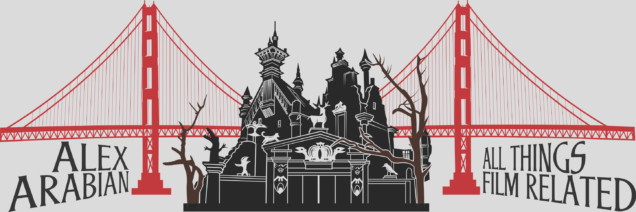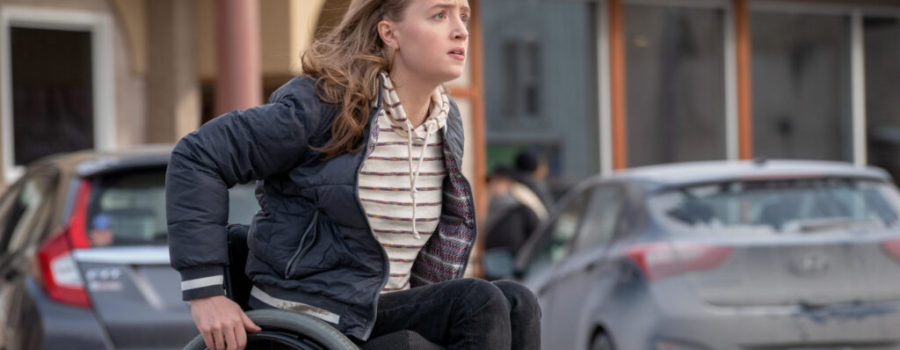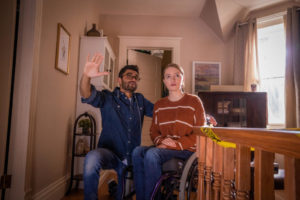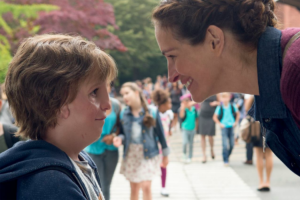[Published at the San Francisco Chronicle] Since the late 1980s, you may have noticed a paradigm shift in film and television toward authentic disability representation. Not only has this provided more roles for people with disabilities, but it has also helped to destigmatize and normalize their stories to audiences around the world.
After earlier roles for people with disabilities used them mostly for humor, horror or disgust, this second wave aims to debunk notions that having a disability constitutes less than “normal,” or that it defines someone.
Whether you’re looking for a postwar, romantic or musical drama; a contained thriller; a coming-of-age family film; or a bingeable comedy series, this list of five films and one television show of veristic disability representation has something for everyone.
‘The Best Years of Our Lives’ (1946)
William Wyler’s “The Best Years of Our Lives” was a breakthrough in Hollywood for its honest look into the life of a person with a disability. Its intersectional story follows three veterans as they return home and adjust to small-town post-service life. Taking from Italian neorealism, Wyler cast nonprofessional actor Harold Russell, who lost both hands in World War II, as one of the servicemen. Russell’s performance as a veteran reconnecting with society through love, not pity, earned him two Academy Awards — best supporting actor and an honorary award for empowering veterans. Earning $10.2 million at the global box office, it was the highest-grossing film of the 1940s. In 1989, it was selected as one of the first 25 films by the Library of Congress to be archived in the U.S. National Film Registry for its cultural, historical and/or aesthetic significance.
Watch it: Available to rent on various services, including Apple TV.
‘Children of a Lesser God’ (1986)
In 1987, Marlee Matlin became the first deaf actor to win an Academy Award, taking home the Oscar for best actress in a leading role in Randa Haines’ “Children of a Lesser God.” The film was one of the first in decades to contain a realistic disability portrayal.As in “The Best Years of Our Lives,” the film’s characters connect through love. Paving the way for a series of instrumental milestones over the next three decades, the film was a sensitive and respectful portrayal of romance between a person without a disability and a deaf person. When the Oscars honored Matlin alongside sign interpreter Jack Jason, it helped to normalize deaf lives and ensure that a deaf global audience, among 37 million live viewers, feels seen.
Watch it: Available to stream on Amazon Prime Video.
‘Run’ (2020)
With “Run,” Kiera Allen was the first wheelchair-using actor to star in a major feature thriller since Susan Peters’ role in John Sturges’ “The Sign of the Ram” in 1948. About a mother (Sarah Paulson) with Munchausen syndrome by proxy and her mysteriously sick daughter (Allen), “Run” integrates the normalcy of a wheelchair-using person’s day-to-day routines and Allen’s own experience as a wheelchair user to show that using one is not a hindrance, while also introducing a new generation to wheelchair-using actors on the big screen. Allen told The Chronicle last year of her casting, “to be a part of that moment is really exciting. Authentic representation is so important.”
Watch it: Available to stream on Hulu.
‘Loudermilk’ (2017-)
Although many viewers have criticized the Farrelly brothers for using actors with disabilities as jokes in their films, the 2020 Morton E. Ruderman Award in Inclusion honorees have consistently cast them since “Dumb and Dumber.” Mat Fraser as Roger in “Loudermilk” gives one of the most nuanced performances of his career over 25 episodes. In season 3, episode 7, directed by Bobby Farrelly, Roger refuses an award given to him, and sums up exactly why authentic representation matters: “This is just inspiration porn. Stella Young, an Australian activist, coined that phrase. Yeah, porn. Because it’s all about objectifying people like me and her so that you can say to each other. ‘Oh, my life might suck, but it could be worse, just look at the bloke with short arms.’”
Watch it: Available to stream on Amazon Prime Video.
‘Sound of Metal’ (2019)
Aside from Riz Ahmed, Olivia Cooke and Paul Raci, a child of deaf adults, the cast of Darius Marder’s “Sound of Metal” (2019), which includes Jeremy Lee Stone, Lauren Ridloff, Chelsea Lee and Shaheem Sanchez, is largely deaf, providing a rare glimpse into the deaf community in narrative feature cinema. By entering a sober living environment for the hearing-impaired, Ahmed’s character and, by transitive property, the audience, gets a sense of what it’s like to adjust to hearing loss, find a deaf community in a hearing-favored world and communicate through sign language. Perhaps most groundbreaking about the film’s representation is that its cast is as diverse as the real-world deaf community: Ahmed is British Pakistani, Sanchez is Latino, Ridloff and Stone are Black, and Lee identifies as queer.
Watch it: Available to stream on Amazon Prime Video.
‘Drought’ (2020)
One of the victors of the “Hometown Heroes” crowdfunding campaign, the Duplass brothers’ partnership with Seed&Spark in 2017, “Drought” follows an autistic kid who, during a historical drought in the South, predicts a cathartic storm coming and enlists his family and friends on a storm-chasing adventure. Owen Scheid, who is autistic, gives a heartfelt, raw performance as Carl. Aligning with the Duplass brothers’ microbudget filmmaking philosophy, “Drought” displays the infectious positivity of a community of people embracing people on the spectrum like Carl as much as it highlights the importance of film industry inclusion itself.
Watch it: Available to rent on Amazon Video.








Leave a Reply
Your email is safe with us.